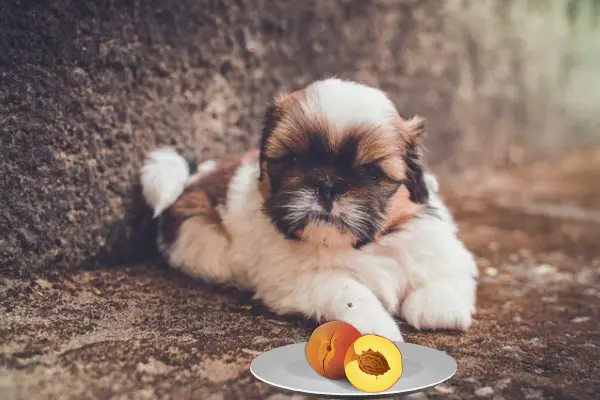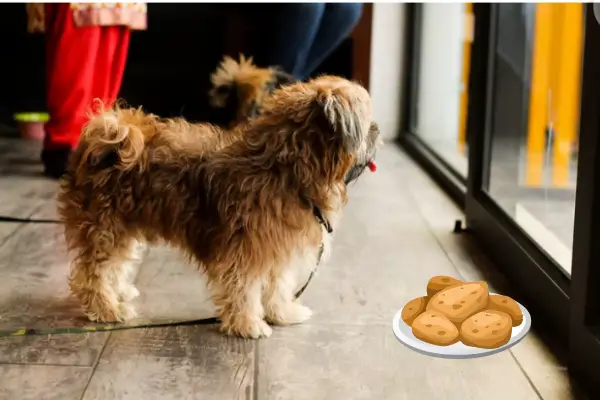How Do I Get My Puppy To Drink Water [10 Working Tips]
![How Do I Get My Puppy To Drink Water [10 Working Tips] How Do I Get My Puppy To Drink Water](https://petcreeks.com/wp-content/uploads/2023/04/How-Do-I-Get-My-Puppy-To-Drink-Water.jpg)
One of the most important things you can do for your furry friend is to make sure they stay hydrated.
But what do you do if your pup just won’t drink water?
Don’t worry, we’ve got some tips and tricks to get your little one lapping up their water in no time.
Check out these easy tips on how to get your puppy to drink water!
How Do I Get My Puppy To Drink Water
Here are some tips to encourage your puppy to drink more water:
1. Offer water before and after treats
Offer water to your puppy before and after any treats you give him.
Offering water before and after treats can encourage your dog to drink more because it can make them thirsty.
Offering water after treats can also help with digestion and prevent choking.
It’s crucial to remember that giving your puppy treats in excess might result in weight gain and other health issues, so you should only do it occasionally.
2. Get a pet fountain for your puppy
Some pups are drawn to moving water, so a pet fountain delivers a constant supply of fresh, filtered water.
Your dog may drink more as a result of the fresh, flowing water that a pet fountain offers.
Pet fountains come in a variety of shapes and sizes, so you can select one that appeals to your puppy.
Additionally, your puppy might find comfort in the sound of the running water and feel calmer.
Most pet shops and online vendors have pet fountains so try getting one.
3. Make ice cubes from low-sodium broth
On a hot day, some puppies like to play with or gnaw on ice cubes to cool down.
Making ice cubes from the low-sodium broth is another method to flavor the water that your puppy drinks.
The broth should be poured into an ice cube tray and frozen. To get your dog to drink, add a few cubes to their water bowl.
This is particularly beneficial in the summer heat when puppies may be more susceptible to dehydration.
4. Add flavor to your puppy water
The flavor of pure water might not be appealing to all puppies, so to make their water more appetizing, you might add a little amount of low-sodium chicken or beef broth to it.
Just make sure the broth is minimal in sodium because your puppy can become ill from too much salt.
As an alternative, you might try sprinkling some crushed fruit, such as watermelon, or a little unsweetened fruit juice in their water.
5. Add water to your puppy food
Try adding water to your puppy’s meal if they aren’t getting enough to drink.
This is particularly useful if your puppy is eating dry kibble.
To make their kibble more like gravy, you can add a tiny bit of water.
As an alternative, you might add water to their canned meal to help them drink more water.
This encourages a healthy digestive system in addition to helping your puppy stay hydrated.
6. Use a wide and shallow water bowl
Puppies, especially those with short necks, may have trouble getting to the water in a deep bowl.
They can get to the water more easily in a wide, shallow bowl.
Additionally, some puppies might favor a certain type of water dish material, like ceramic or stainless steel.
Try out various bowl styles to determine which one your puppy favors.
7. Make sure the water is fresh and clean
Like people, puppies love pure, fresh water. If the water in their bowl sits for too long, bacteria or mold may grow, endangering the health of your puppy.
You should change your puppy’s water at least once daily, and more frequently if required.
To make sure the water bowl is thoroughly sterilized, be sure to clean it frequently with soap and water or put it through the dishwasher.
8. Use a water bottle
Some pups like to sip water out of a bottle that would typically be used for hamsters or guinea pigs.
To avoid leaks, use a bottle that is made for dogs and has a ball-bearing tip.
To stop bacteria from forming, be sure to constantly replace the water in the bottle and wash the bottle.
9. Place the water bowl in a different location
If their water bowl is close to their food bowl or in a busy area, puppies might not want to drink it.
Consider moving the bowl to a more private area where they will feel more at ease drinking.
Make sure your puppy can easily get to the water bowl, especially if they are little or toy kinds.
Learn more about dogs hiding under a bed and not eating.
10. Try using a different type of bowl
Using a particular bowl can also influence whether your puppy will drink water.
Try using a different type of bowl, such as one made of ceramic or stainless steel, as some puppies might not enjoy the feel or form of their water bowl.
Plastic bowls should not be used as they may contain dangerous chemicals and breed bacteria over time.
Learn more about the benefits of proper nutrition in dogs.
Effects of puppies not drinking enough water
Here are some common side effects of puppies not drinking enough water:
- Dry mouth and nose: When a puppy becomes dehydrated, the mouth and nose can become dry and stick to one another. This can also cause bad breath.
- Lethargy and weakness: Dehydration can cause a lack of energy or lethargy in puppies. They may seem less energetic or interested in playing and may have a hard time getting up or walking.
- Loss of appetite: Puppies who are dehydrated may lose their appetite or show a reluctance to eat or drink. This can lead to further dehydration and other health complications.
- Sunken eyes: Dehydration can cause a puppy’s eyes to appear sunken or dry, which can be a clear indication that they are not drinking enough water.
- Reduced skin elasticity: Dehydration can also cause reduced skin elasticity in puppies, which means that the skin takes longer to return to its original position after you’ve pinched it.
- Thick and sticky saliva: Thick and sticky salivation is another common side effect of dehydration in puppies. The saliva in their mouth may become thicker and stickier than usual, which can be uncomfortable for the puppy.
- Vomiting and diarrhea: Dehydration can lead to vomiting and diarrhea in puppies. Chronic dehydration can cause intestinal blockages and malnutrition, which can further complicate and worsen the puppy’s health.
- Fever: In some cases, dehydration can also cause puppies to develop a fever, which can be a sign of an infection or other underlying health issues.
- Muscle spasms and seizures: Severe dehydration can sometimes lead to muscle spasms, twitching, and even seizures in puppies. This is a medical emergency and requires immediate veterinary attention.
Learn more about dogs drinking a lot of water and not eating.
Benefits of providing enough water for puppies
Here are some common benefits of providing enough water for puppies:
- Proper Hydration: Adequate water intake is crucial for a puppy’s proper bodily functions, including digestion, circulation, and waste removal.
- Temperature Regulation: Drinking water helps puppies regulate their body temperature, which is especially important during hot weather or after exercise.
- Joint Health: Sufficient hydration keeps joints lubricated and less prone to injury or damage.
- Healthy Coat: Water intake helps keep a puppy’s skin and coat healthy and hydrated.
- Optimal Energy Levels: Adequate water intake helps to keep a puppy’s energy levels high and maintain stamina for play and exercise.
- Proper Digestion: Water helps to break down food, and enables efficient nutrient absorption and waste removal.
- Safe and Healthy Urination: Drinking adequate water ensures that a puppy’s urine is properly diluted, reducing the risk of urinary tract infections and other related illnesses.
- Improved Immunity: Proper hydration helps to ensure a strong immune system and can help prevent certain illnesses and infections.
- Overall Health and Vitality: Water is essential for general well-being and vitality, and ensures that all of the vital functions of the body are properly supported.
Learn more about dogs not eating but throwing up.
Questions
Why is it important for my puppy to drink water?
Keeping your puppy hydrated is essential for its health and well-being.
Water is necessary for many bodily functions, including regulating body temperature, aiding digestion, and transporting nutrients throughout the body.
How much water should my puppy drink each day?
The amount of water your puppy needs depends on their size, age, and activity level.
As a general guideline, puppies should drink about half to one ounce of water per pound of body weight each day.
So, a 10-pound puppy should drink between 5 and 10 ounces of water daily.
What if my puppy won’t drink water?
If your puppy isn’t drinking enough water, there are a few things you can try.
First, make sure their water bowl is clean and filled with fresh water.
You can also try adding a small amount of chicken or bone broth to their water to make it more enticing.
If your puppy still won’t drink, it’s important to consult with a veterinarian.
Can I give my puppy milk instead of water?
While puppies may enjoy the taste of milk, it is not a good substitute for water.
Many puppies are lactose intolerant, which can cause digestive upset.
Stick with fresh, clean water to keep your puppy properly hydrated.
How often should I offer water to my puppy?
Puppies should have access to water at all times and make sure their water bowl is full and easily accessible.
If you’re going out for a walk or a trip to the car, bring a water bottle and a portable bowl with you, so your puppy can drink on the go.
Can I add ice cubes to my puppy’s water bowl?
Yes, you can add ice cubes to your puppy’s water bowl to make it more appealing, especially during hot weather.
Just make sure not to add too many ice cubes at once, as this can cause your puppy to drink too quickly and potentially lead to stomach upset.
Conclusion
In conclusion, getting your puppy to drink water is essential for their health and well-being.
By following these simple tips, you can encourage your furry friend to stay hydrated and happy.
Remember to provide fresh, clean water at all times, make it easily accessible, and consider adding some flavor to make it more enticing.






